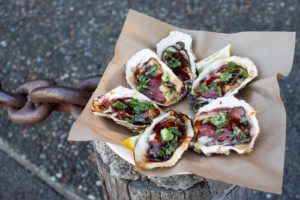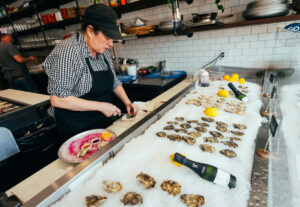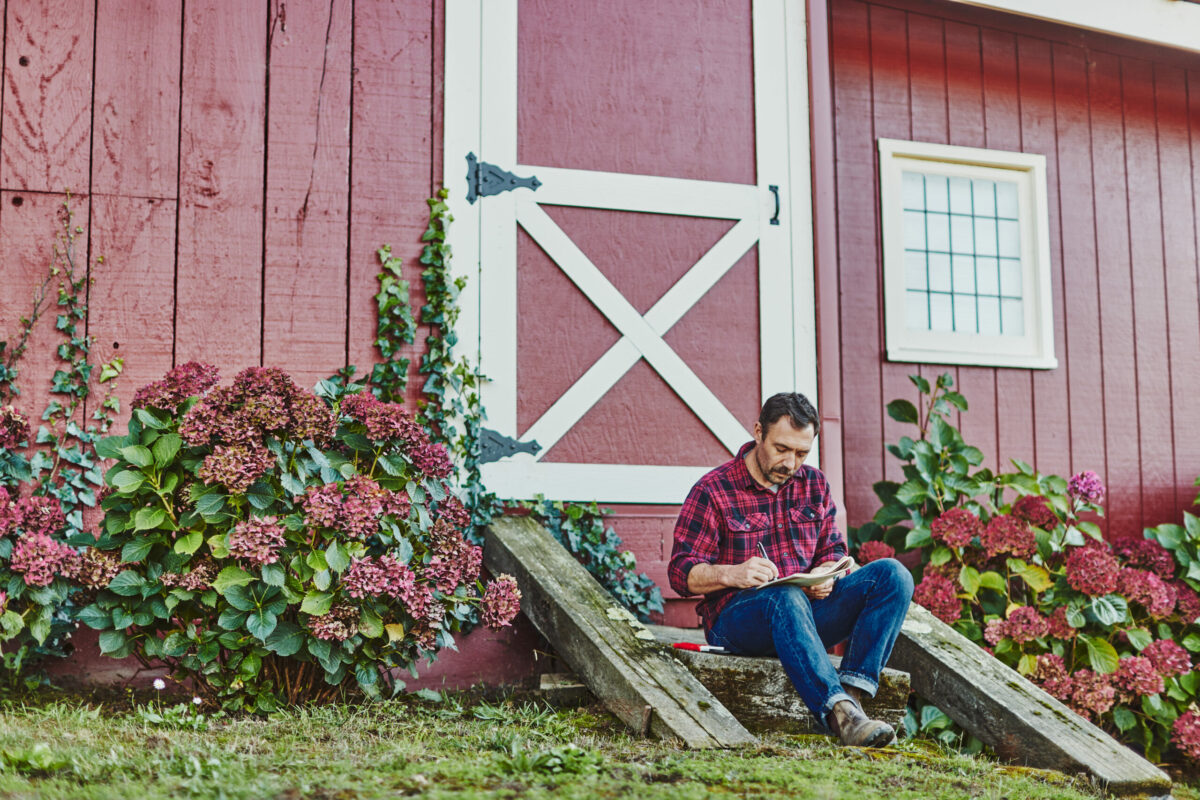When you live in a place like Sonoma, it’s a given that there are going to be heaps of delicious wines to be shared. But the winemakers themselves—their stories, their backgrounds, their under-the-radar recommendations—are what bring a region alive.
Here’s to 15 of the most fascinating folks on the scene right now, including both established winemakers producing thousands of cases a year and up-and-comers exploring exciting new avenues.
Plus, we’ve polled the entire group for their insider thoughts on inexpensive weeknight wines, interesting travel destinations on the horizon— and how it really feels to zoom around the barrel room on the forklift.
The Rising Star: Justin Trabue
Ward Four Wines
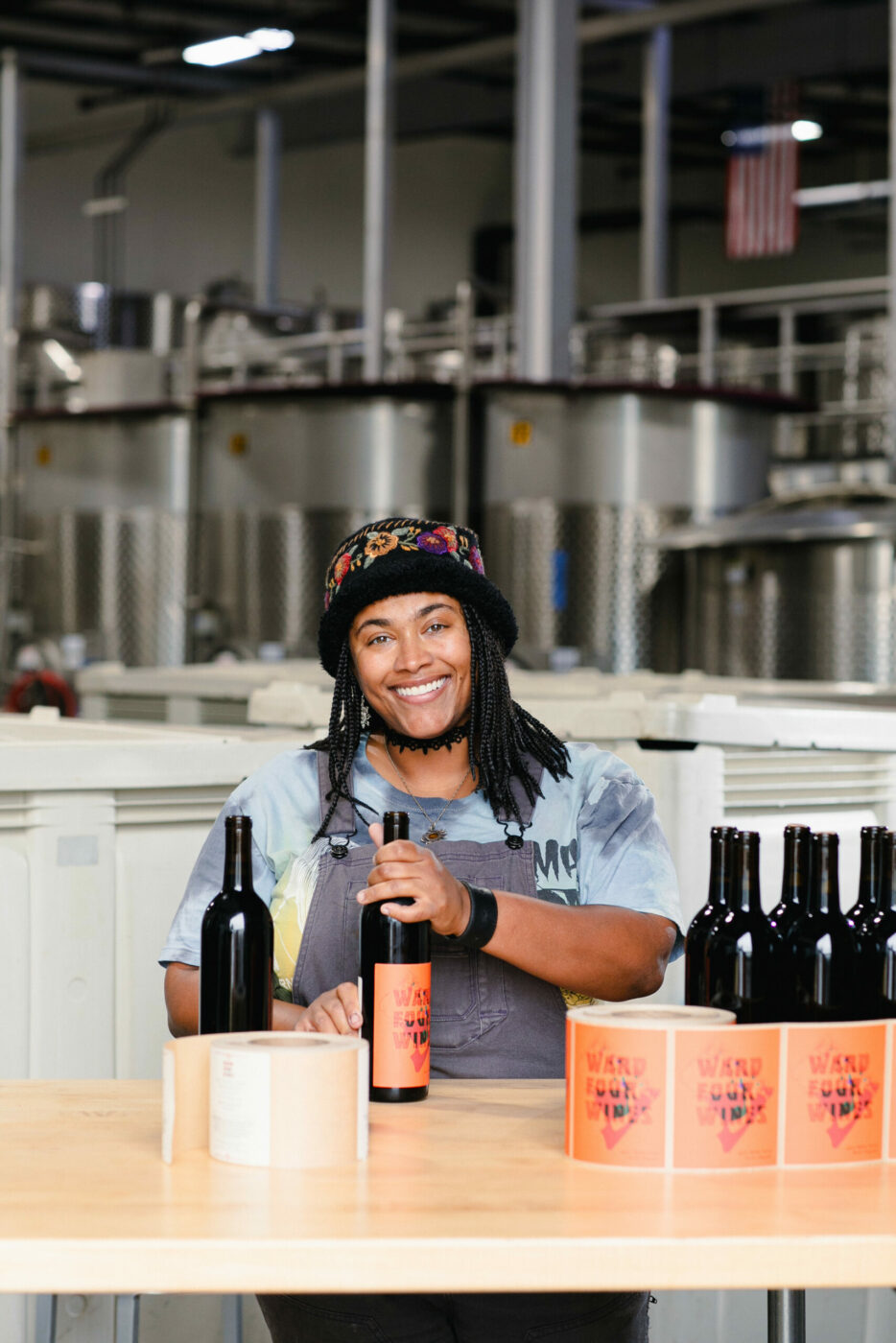
Justin Trabue’s parents may have had a premonition—or a secret plan in mind—when they named her after a California winery. “Unlike a lot of Black families, I grew up with wine on the table,” says Trabue, a native of Washington, D.C.’s Ward Four district. “My parents were always having conversations about food and wine and hospitality.”
Trabue moved to California straight out of high school to study wine, then spent seven years working in production at Lumen Wines in Santa Barbara County and Heitz Cellar in Napa Valley. She founded Ward Four in 2021 with help from the Courier Fresh Fund, which awards cash grants to young Black founders.
Sourcing grapes from vineyard owners who farm sustainably and follow ethical labor practices, Trabue makes her wine at Sonoma’s Obsidian Wine Co. using native yeasts and gentle foot-treading.
“My motto is ‘wines of joy, no fuss,’” says Trabue, whose offerings range from dry Muscat to chillable Mourvèdre. “Ward Four wines are supposed to be enjoyed with friends that give you joy and lift you up to be your highest, happiest self.”
Most proud of: My 2022 Barbera. Savory yet fruitforward, the wine is soft on the palate but so exciting and lifted at the same time. Although it’s light bodied, it holds up beautifully with food.
What I’m drinking in 2024: This year, I’m excited to drink more McCarter Cellars wine, owned by Dennis McCarter. His Sauvignon Blanc is beautiful, and his Pinots truly shine.
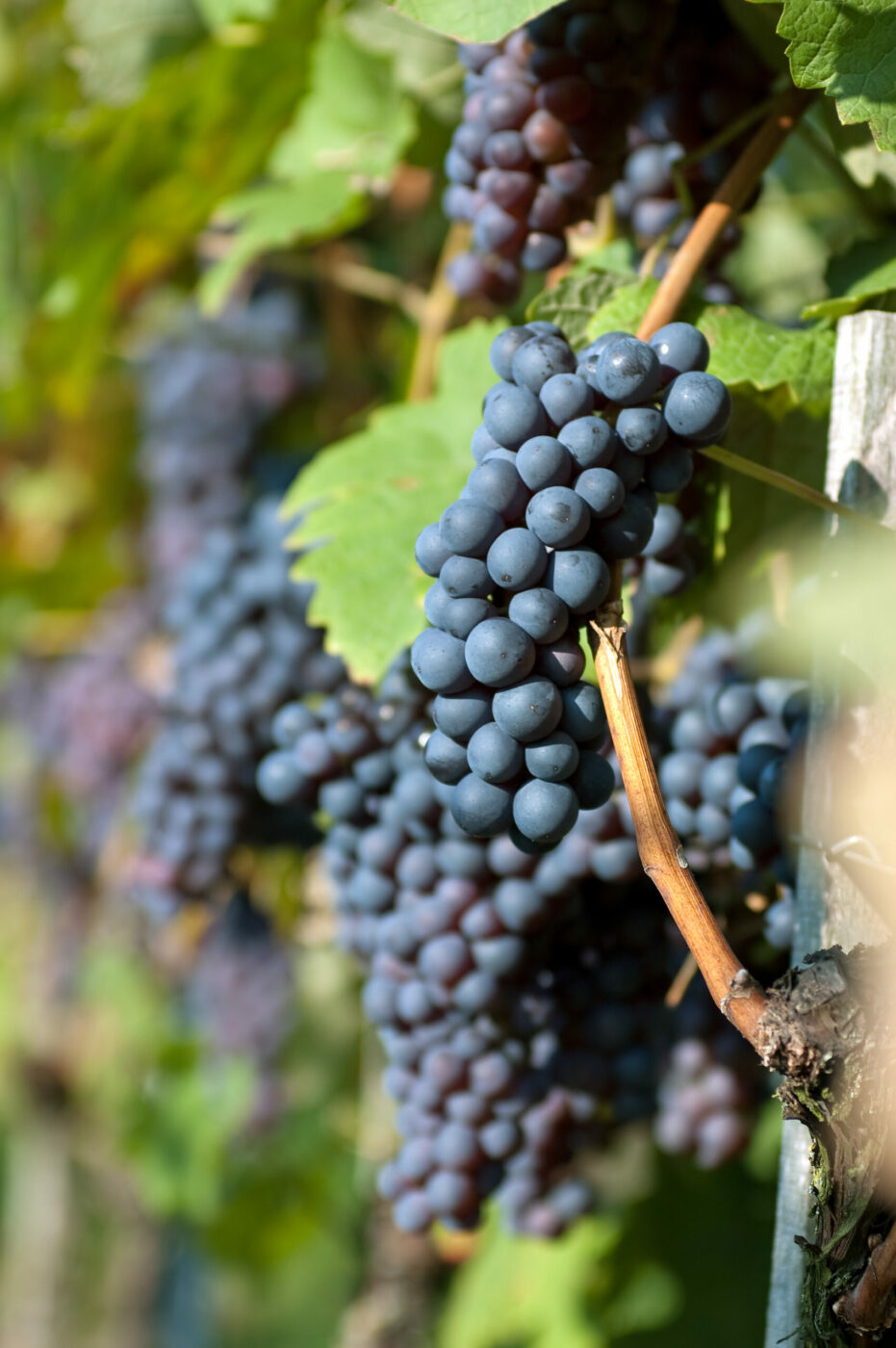
A Varietal I’d Love to Work With…
“Xarel- lo; a native white grape from the region of Penedès region of Catalunya in Spain.The grape is very versatile and can make some delicious sparkling wine as well as some more serious white wines.” — Gustavo Sotelo, Orixe Sotelo
“Muscat of any kind, if I could find it around Sonoma Valley— Á Petits Grains, Alexandria, Canelli.”— Coral Wang, Maison des Plaisances
“Pinot Noir. It makes such a sexy wine.” — Joel Burt, Las Jaras
“Malvasia Bianca, I’ve been searching for a source for this beauty for a few years! Let me know if you know anyone!” — Justin Trabue, Ward Four Wines
“Would love to work with some Rhône varietals.” — Henry de Lambert, Roth Estate
“With LaRue and my consulting, I work with 29 different varieties, so I’m good.” — Katy Wilson, LaRue
The Sage of Natural Wine: Joel Burt
Las Jaras Wines
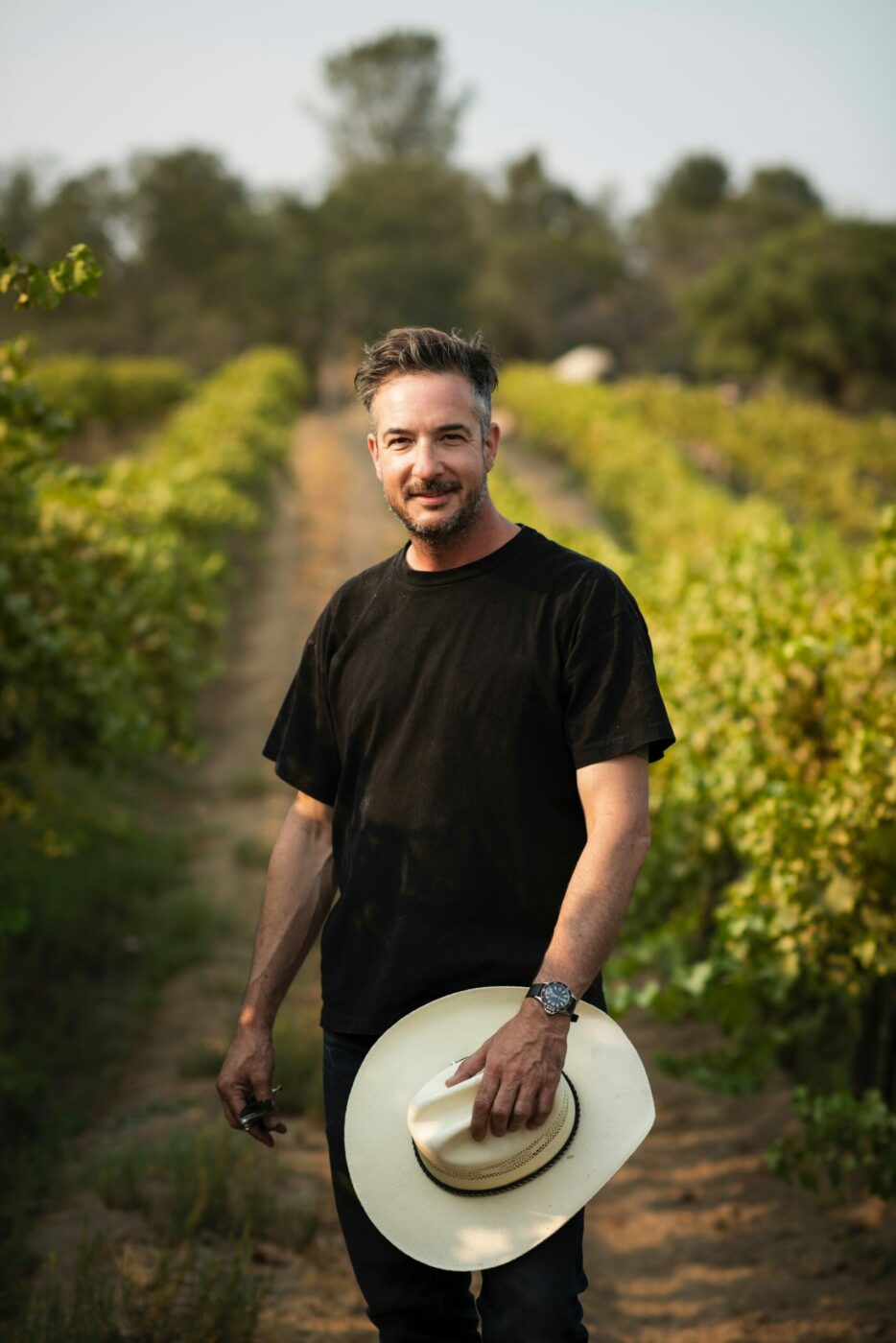
While Joel Burt’s winery partner is a famous comedian — Eric Wareheim of the “Tim and Eric Awesome Show, Great Job!”—there is serious intention behind Las Jaras Wines. Hailing from a family of organic table grape growers, Burt toiled at corporate wineries for years before launching his brand in 2017. A year later, he ditched his day job to go all in on Las Jaras.
With Burt heading up production and Wareheim handling label art and marketing, the partners share a vision to offer cleanly made, natural wines with energy and vitality—wines of place rather than process. “The current trend has been wines that are more about the process of natural winemaking, and those wines can show a lot of flaws,” Burt says.
“We’re taking our natural approach to the fine wine space.”
These days, the Las Jaras lineup is no small venture, with 20,000 cases produced annually and more than a dozen wines, from Russian River Trousseau Gris to Sweet Berry Wine—named for a “Tim and Eric” show sketch. In 2024, Las Jaras will release its first Oregon Chardonnay.
Most proud of: Our three Chardonnays from wildly diverse areas: Santa Rita Hills in Santa Barbara County, Alder Springs Vineyard in Mendocino, and the Chehalem Mountains in the Willamette Valley of Oregon.
What I’m drinking in 2024: I really like the wines from LaRue. Katy Wilson is a really talented winemaker.
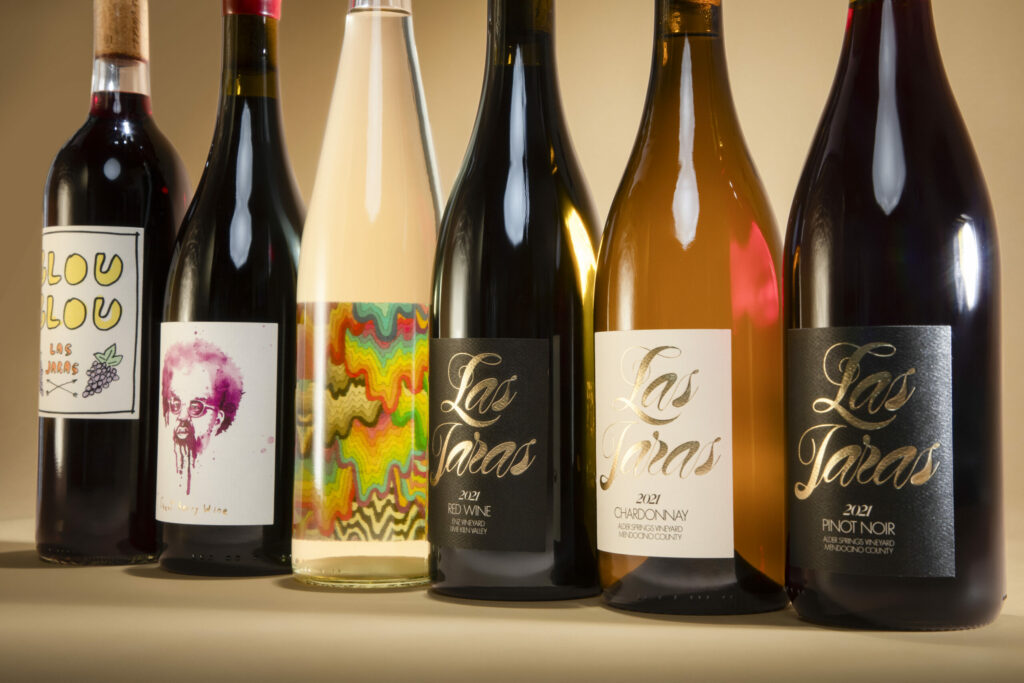
My Winemaker Hero Is…
“Brad Webb, the founding winemaker at Hanzell, singlehandedly invented a good portion of standard winemaking practices in the modern age.” – Cody Rasmussen, Desire Lines
“Jack Sporer [Fresh Wine Co.]. He never falters, with the most unique grace, charm, and sound advice. Whether through harvest, off-season work, or just friendship, this guy’s got everyone’s back.” – Coral Wang, Maison des Plaisances
“Mike Chelini of Stony Hill Vineyards, who passed away in October. He was proof that simplicity works, and he truly let the soil and grapes do the talking.” – Nick Hess, Leghorn Wine Co.
“Michael Lancaster from Tin Barn Vineyards. He still approaches every harvest and every day in the cellar with the same joy and excitement as someone who just started making wine more recently.” – Gustavo Sotelo, Orixe Sotelo
The Seasoned Farmer: Daniel Ricciato
Marnet Wines
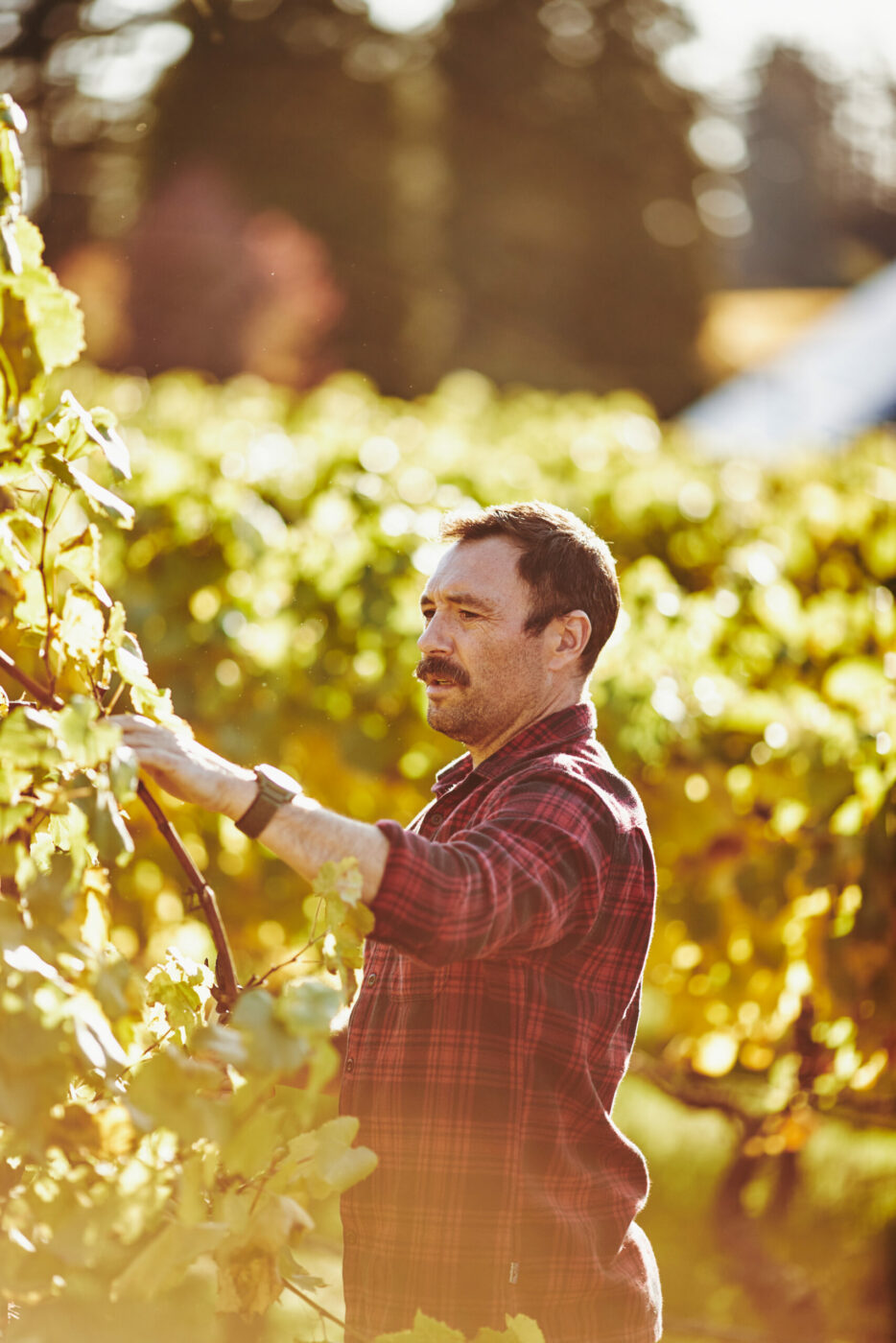
You’d think that managing more than a hundred vineyard sites for winemaker Thomas Rivers Brown would take up all of Daniel Ricciato’s time—yet he still manages to produce his own acclaimed wines under the Marnet label.
Ricciato named Marnet for his German grandmother— a joyous woman with a knack for celebrating simple pleasures—and dedicated it to single-vineyard Pinot Noir and Chardonnay from the Sonoma Coast and Mendocino. With vineyard expression as his goal, Ricciato makes whole-cluster wines with native yeasts, minimal sulfur, and no additives.“A lot of people talk about consistency across their wines, but I don’t want consistency,” says Ricciato. “I want all of my wines to have their own personalities.”
Still working his day job, he intends to keep his brand small. “There are a lot of producers that make 20 or 30 wines, and that would drive me nuts,” he says. “I want my portfolio to be very succinct and to the point.”
Marnet will achieve a new milestone in 2024 when Ricciato takes over farming the well-known McDougall Ranch Pinot Noir vineyard on the Sonoma Coast.
Most proud of: My Chouette Pinot Noir. It’s a site that I’ve had enough time to work with to where I’m starting to make some small adjustments. I’m hoping that’s going to start to pan out and elevate that wine.
What I’m drinking in 2024: The wines that Steve and Catherine Kistler produce at Occidental Wines are superb every year.
Mind-Blowing Bottles
“The 2021 Schäfer-Fröhlich GGs: a magical, mysterious, beautifully intense Riesling from the Nahe.” — Cody Rasmussen, Desire Lines
“The 2000 Henri Bonneau Reserve des Celestins Chateauneuf-du-Pape. Each time I have had this wine it has been dazzling and kaleidoscopic.”– Daniel Ricciato, Marnet
“The Didier Dagueneau Pouilly-Fumé Silex from the Loire Valley in France. This wine is perfection, a master class in beautifully articulating the expression of terroir and place.” – Katy Wilson, LaRue
“A Carlisle 2019 Rossi Ranch Zinfandel. The fruit and the oak were really well integrated, and I was sad when the bottle was empty”. – Morét Brealynn Chavez, Morét-Brealynn
“A Chardonnay by Albert Grivault from Meursault. I have a tendency to be overly analytical about wine, but in this instance it spoke directly to a more primal part of my brain and I simply enjoyed the wine.” – Eiji Akaboshi, Freeman
The Sweetest Pair: Eglantine Chauffour & Alberto Bianchi
Ena Winemakers
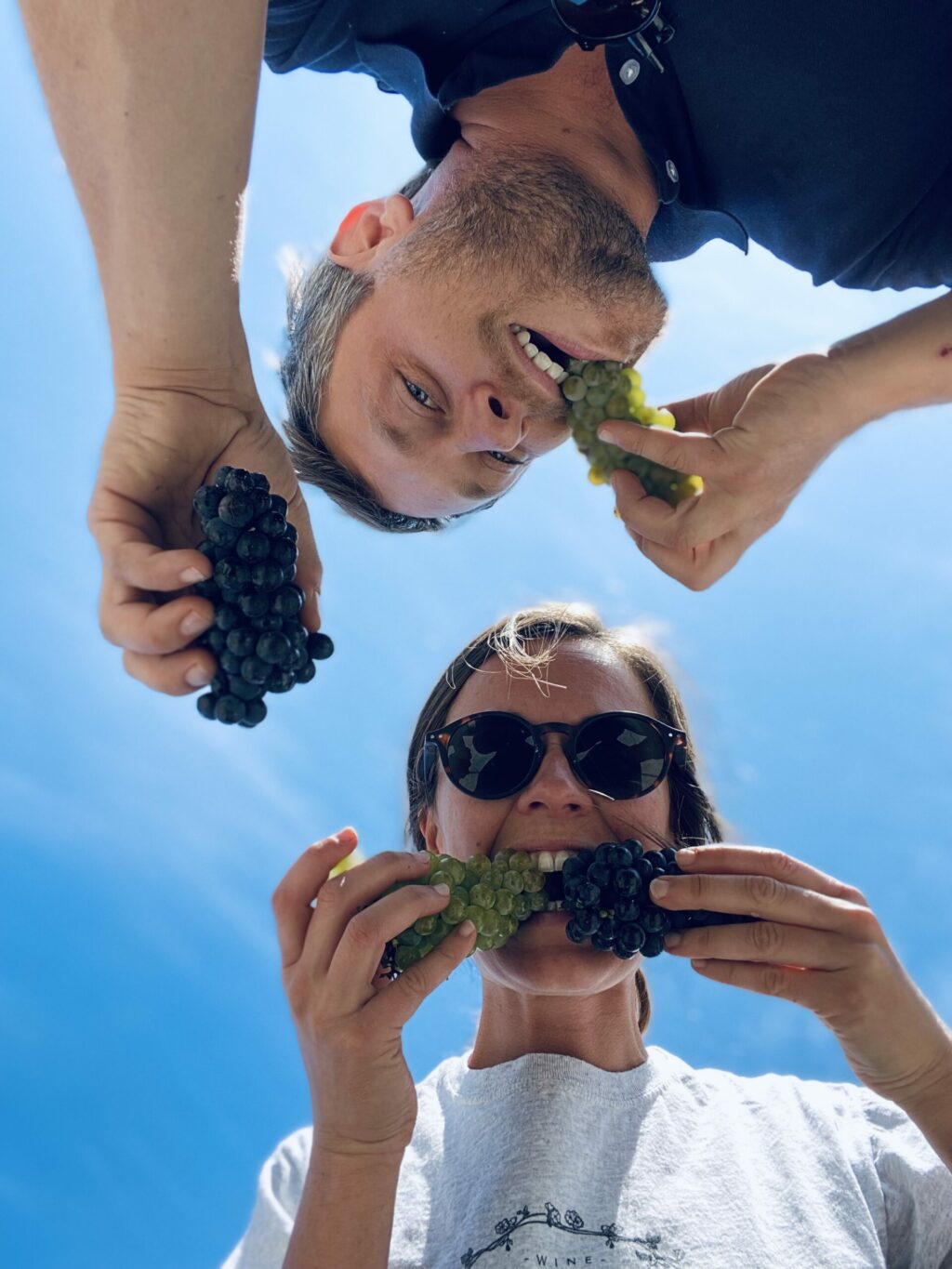
To say that Eglantine Chauffour and her husband Alberto Bianchi bring an international perspective to their winemaking would be an understatement.
Chauffour is from France and Bianchi is from Milan. The couple met while making wine in Western Australia and worked in cellars all over the world before settling in Sonoma County.
By day, Chauffour works as an enologist at a winemaking equipment and supply company, and Bianchi is the winemaker for ADAMVS on Howell Mountain. Together, they launched ENA in Santa Rosa with Pinot Noir as their flagship, along with a carbonic Primitivo called Eurica.
All of their grapes hail from Mariah Vineyards in the Mendocino Ridge AVA—which just became one of the first vineyards to earn “Land to Market” regenerative farming certification.
The winemakers take a low-intervention approach to winemaking, using native yeasts and minimal sulfur dioxide.
“We are very hands-off, but that’s not saying that we just let the wine go,” says Chauffour. “We are very present in terms of tasting the wine every day, and every decision that we make really matters.”
Most proud of: Probably the most “out of the box” wine we make is Eurica , where we experiment with carbonic maceration.
What I’m drinking in 2024: We enjoy Brick & Mortar’s Sweetwater Spring Vineyard Blanc de Blancs sparkling wine—it has a lot of minerality and elegance with beautiful fine bubbles.
Favorite Places to Shop for Wine
-
Bottle Barn, Santa Rosa
-
Sonoma’s Best, Sonoma
-
La Dolce Vita Wine Lounge, Petaluma
-
Enoteca Della Santina, Sonoma
-
Valley Bar + Bottle, Sonoma
-
Wilibees Wine and Spirits, Santa Rosa
-
The Wine Vault, Guerneville
The Friend to All: Coral Wang
Maison Des Plaisances
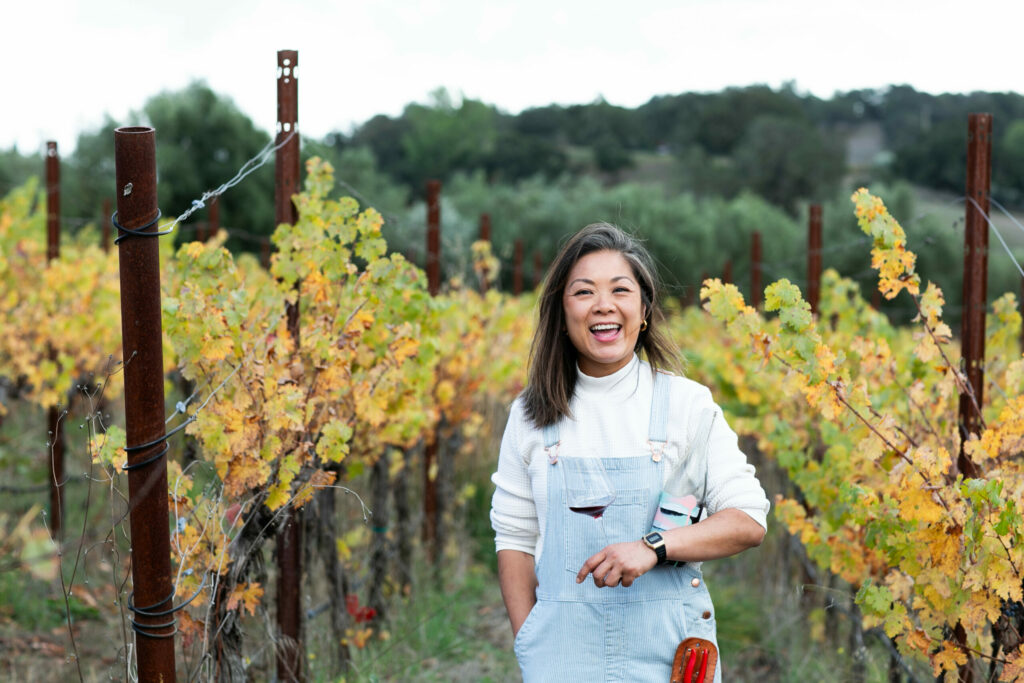
In less than a decade, Coral Wang pivoted from a career in New York’s fashion industry to making natural wine at Domaine Mamaruta in Provence to launching a wine brand in Sonoma.
Wang debuted Maison des Plaisances (“house of pleasures”) in 2021 with Cuvee No. 1, a semi-carbonic Grenache blend from a regeneratively farmed vineyard in Cloverdale. The following year, she took over farming a vineyard in Napa’s Lovall Valley and introduced her Carbonic Cab—a light, playful take on Cabernet Sauvignon. For the 2023 vintage, Wang made a skin-contact Sauvignon Blanc fermented in amphora.
“I’ve taken on this mission to make California noble grapes appealing again and bring a fresh, new perspective,” says Wang, who also works at Magnolia Wine Services and Valley Bar + Bottle in Sonoma. “Every vintage, every wine, is a new experiment.”
She has also embraced a mission to open wine industry doors for people in the BIPOC and LGBTQ+ communities by donating a portion of her sales to pro-equity organizations like the Two Eighty Project and Co-Fermented.
Most proud of: A Sauvignon Blanc from the Denmark Street vineyard, farmed by my dear friends Holly and Eric Clouse. I am so glad I pushed and didn’t take no for an answer when it came down to borrowing amphora for this cuvée. The wine is balanced and bursting with tropical character. Brightness, salty orange peel, and for some wild reason, this site gives us a touch of coconut.
What I’m drinking in 2024: I’m always excited to taste through the Ryme Cellars lineup.
Easy to Find, Under-$20 Favorites
“The best under-$20 wine in the world is Domaine de la Pépière La Pépie Muscadet for $16 at Bottle Barn.” – Joel Burt, Las Jaras
“La Crema Sonoma Coast Pinot Noir.” – Morét Brealynn Chavez, Morét-Brealynn
“Segura Viudas Cava.” — Adolfo Hernandez, Monroy Wines
“Ferrari-Carano Fume Blanc.” – Henry de Lambert, Roth Estate
“The sparkling wines from Une Femme (at Target!) or the very popular La Marca Prosecco.” –Katrina Laemmerhirt, Social Creatures
“Husch Pinot Noir from Anderson Valley.” – Nick Hess, Leghorn Wine Company
Cody Rasmussen
Desire Lines Wine Co.
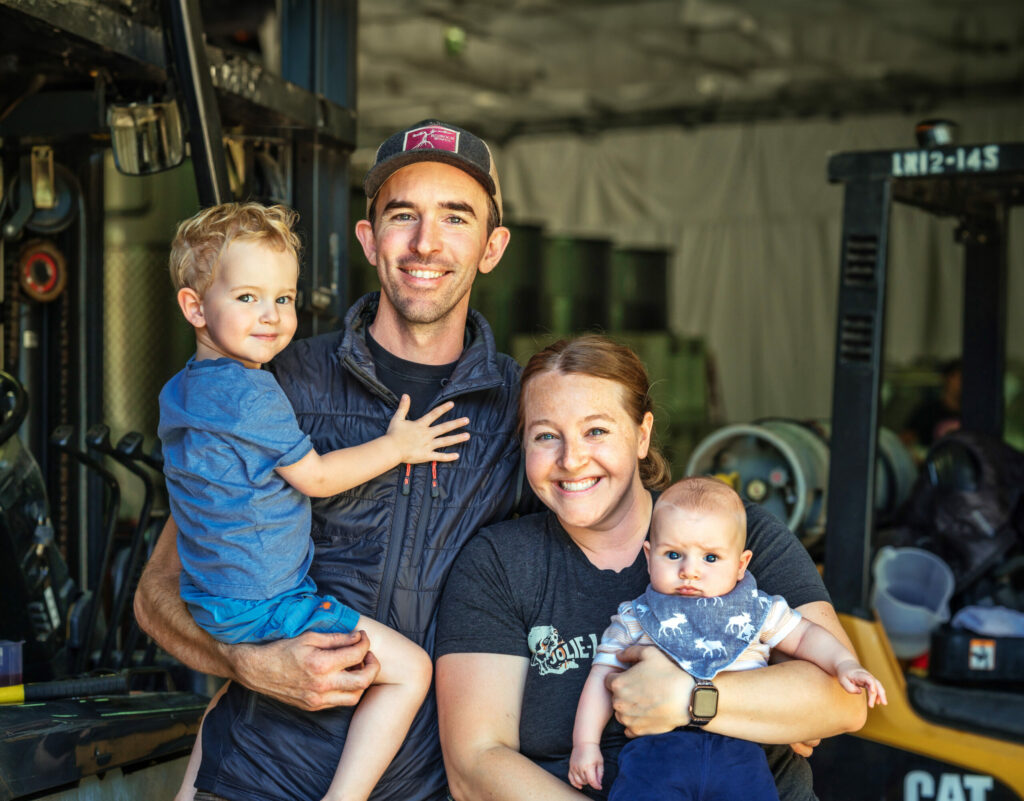
Cody Rasmussen thought he was headed for a career in economics when an overseas study program in South Africa—tasting local wines on the side— changed his trajectory. Months after graduation, he and his wife Emily moved to Sonoma to pursue a life among the vines.
The leap led him to Bedrock Wine Co., where he works with Morgan Twain-Peterson as associate winemaker. Since launching Desire Lines in 2015 with a single ton of Syrah, the label has grown from 45 to 1,000 cases, with single-vineyard dry Riesling as its calling card.
“When we picked up Cole Ranch in Mendocino I told Emily, ‘There’s no way we can sell this. We’ll do 50 cases and I’ll drink it myself for the next 20 years,” says Rasmussen. “But now we cannot find enough Riesling.”
Rasmussen describes Desire Lines wines as “distinctly not natty,” yet many of his practices share commonalities with natural winemaking. “Our focus is on having that great vineyard speak through the glass,” he says, “and our winemaking practices line up around that.”
Most proud of: Our Cole Ranch Riesling. The wine is still only halfway through fermentation, but the flavors leap out of the glass already and are so precise, pure, and intense.
What I’m drinking in 2024: Tidings Wine Moonridge Vineyard Cabernet Sauvignon . It’s a beautiful expression of Moon Mountain Cabernet Sauvignon from the very top of the Mayacamas.
Gustavo Sotelo
Orixe Sotelo
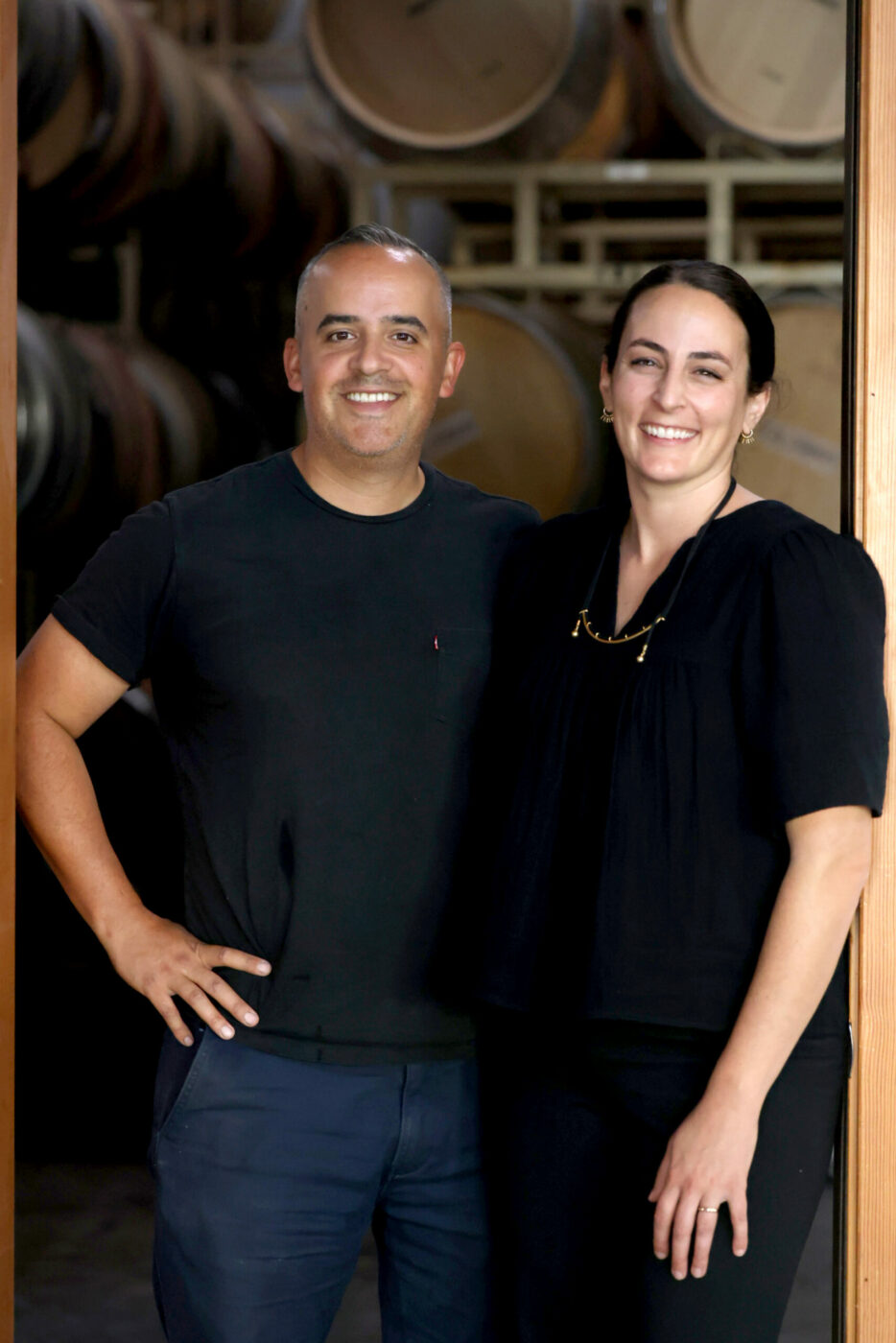
Many know Gustavo Sotelo as the head winemaker at Scribe, yet his personal label is creating a buzz all its own. Born in Mexico City, Sotelo began exploring Spanish wines after tracing his family name back to Galicia. The journey inspired him to create Orixe Sotelo, focusing on Tempranillo, Garnacha, Godello, and other Spanish grape varieties.
“There’s so much focus on French varieties and French winemaking techniques in California, yet as a New World wine region, we have the potential to do whatever we want,” Sotelo says. “So why aren’t more people playing around with Spanish grape varieties?”
Taking that concept a step further, Sotelo uses a traditional Sherry-making technique to create his Rosé en Flor, which involves growing a film on the wine’s surface after primary fermentation. Along with giving the Grenache- Tempranillo blend a bone-dry character, the process contributes savory and nutty elements, and enhances texture.
“I do like to make very classical wine in some ways, but I also like experimenting,” he says. “I’m just trying to broaden the conversation about what California wine can be.”
Most proud of: The Rosé en Flor. It is a unique winemaking style rarely seen in California and it requires a lot of care and patience to create the right kind of flor.
What I’m drinking in 2024: The Birdhorse Wines Cinsault from Preston Vineyard. Katie Rouse and Corinne Rich are making some phenomenal wines.
Most Useful Winemaking Tool
-
A flashlight
-
My nose
-
A notebook
-
My phone
-
My own palate
-
Sanitizer
-
An air pump
-
A refractometer
-
A wineglass
The Barrel Fermenter: Adolfo Hernandez
Monroy Wines
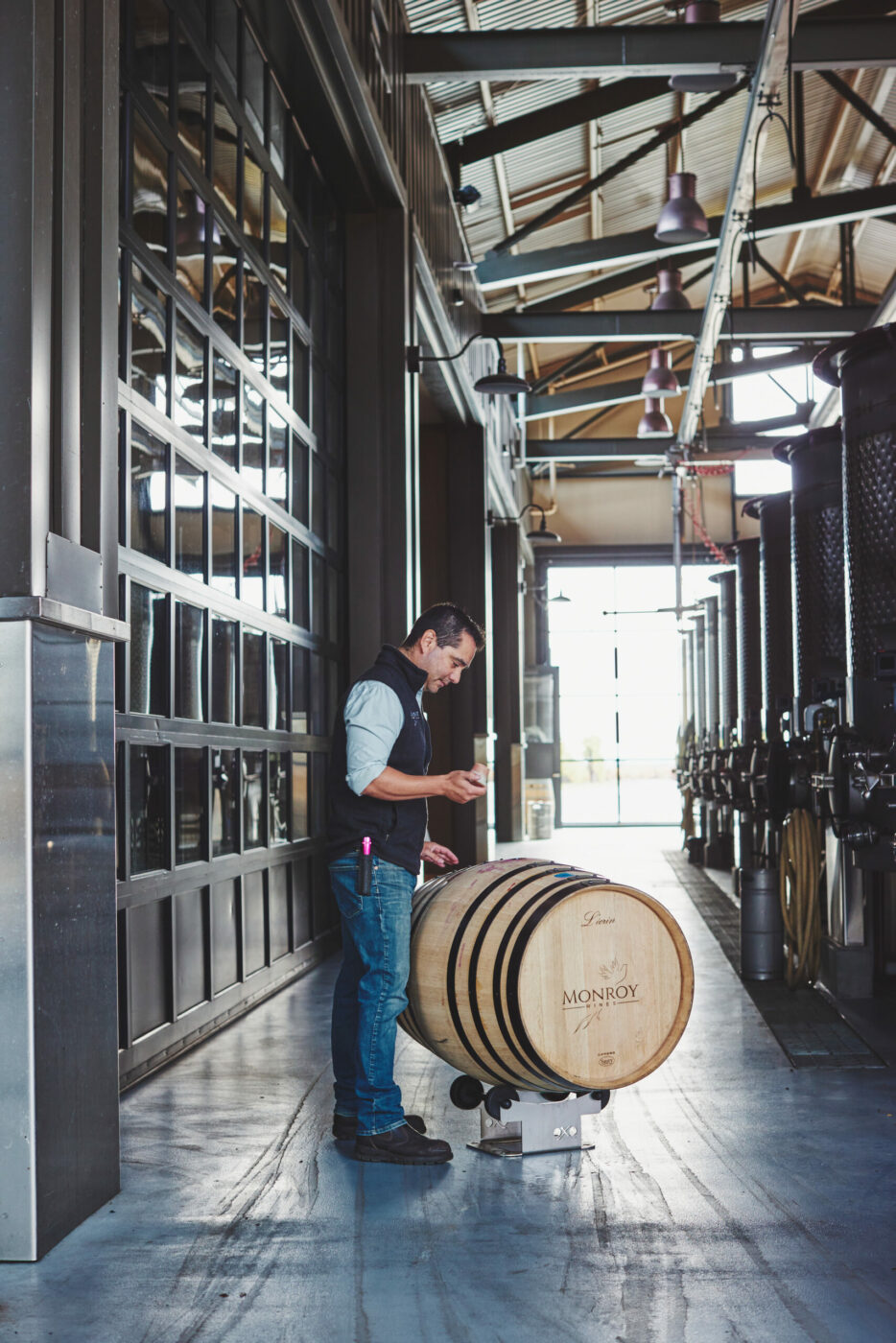
Adolfo Hernandez— full name Aldolfo Hernandez de Monroy—grew up in the dry country of Saudi Arabia, but that didn’t stop his Guatemalan father from making his own wine in the family’s bathtub and recruiting 7-year-old Adolfo as his apprentice. It wasn’t until years later, when the family moved to California, that he decided to go legit as a winemaker.
Hernandez worked at high-end wineries in Napa Valley before landing at Benovia Winery in Santa Rosa as associate winemaker, and in 2020, he released his first Monroy Cabernet Sauvignon. The idea, he says, was to create a more restrained style of Cabernet through early picking and barrel fermentation. “Something that’s more savory, more floral—that’s what I want to make,” he says.
To enhance texture, he uses a labor-intensive, closed-barrel fermentation process that involves opening the heads to add the Cabernet berries, then rolling the barrels to work the skins and caps. “I like to describe it as changing the oil in your car while it’s running,” says Hernandez. “It takes some skill to get it right.”
Most proud of: My Cabernet Sauvignon. It’s the raison d’être for the brand, and the approach of closed-head rolling fermentations along with early picks makes for distinct wines.
What I’m drinking in 2024: I like the white Pinot Noir that my friends at Dot Wine make. It’s bright, light, and still complex with green melon and floral tones.
Winery Pets
“Our golden retriever, Maya, is named for the mountains of the Mayacamas. She came to the winery every day as a puppy but now mostly stays home to clean up after our two young boys.” — Cody Rasmussen, Desire Lines
“Nico is a brown lab/pitbull mix that I adopted right before the harvest of 2019. The winery and vineyard are his happy places, and his favorite toy is a barrel bung.” – Gustavo Sotelo, Orixe Sotelo
“I have two pet rats, Dolcetto and Gris. They don’t come to the winery but are the sweetest ladies ever!” – Justin Trabue, Ward Four Wines
“Our Morkie is a regular fixture at the winery and can also be found running quality control with me in the vineyards during harvest.” – Katy Wilson, LaRue
“Honey Bee the beagle is great for pest control but doesn’t like the loud crush equipment!” – Nick Hess, Leghorn Wine Co.
The Trend Setter: Katy Wilson
LaRue Wines
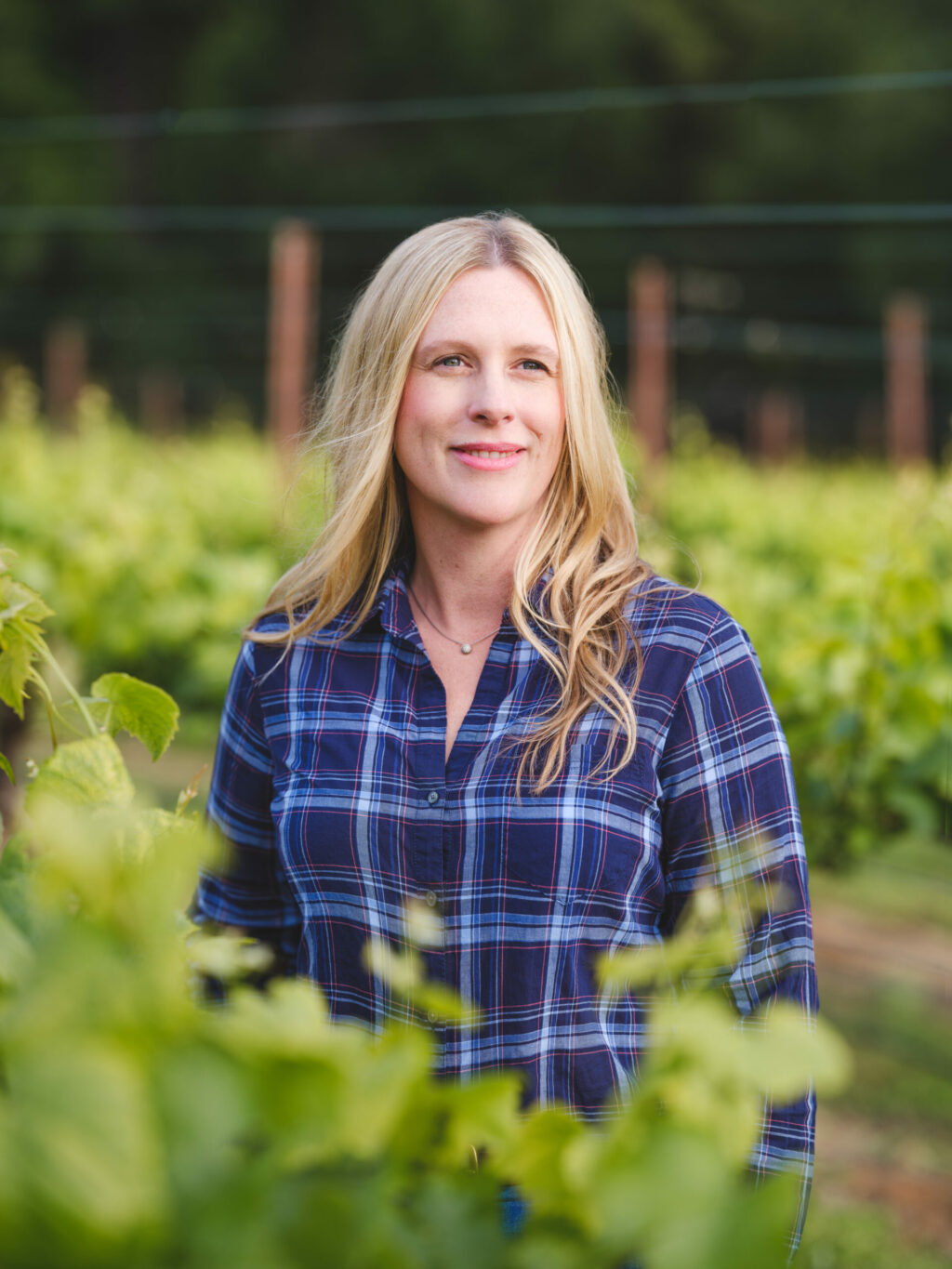
With a new label launching this spring, longtime talent Katy Wilson has a new reason to shine. The much-lauded winemaker began her career at Flowers Vineyard & Winery in Healdsburg before launching her LaRue label—inspired by her rebel great-grandmother Veona LaRue Newell—at just 26 years old. Since then, Wilson has built a reputation as a sought-after consultant, working with buzzy wineries such as Anaba Wines, BloodRoot Wines, Reeve Wines, and Smith Story Wine Cellars.
While LaRue focuses on small-production, site-specific Pinot Noir and Chardonnay from Sonoma Coast vineyards, her new brand, Charlie LaRue, developed with husband David Meneses and named for their young daughter, indulges the couple’s passion for cellar-worthy Bordeaux wines. It will showcase organically farmed Sonoma County Cabernet Sauvignon and Sauvignon Blanc from celebrated vineyards such as Monte Rosso and Bedrock.
“Similar to our Pinots, we’re not making wines to just open up and they’re gone,” Wilson says. “They are beautiful and fresh and lively when they’re young, but they can also age.”
Most proud of: An organically farmed, barrel-fermented Sauvignon Blanc from the Pigasus Vineyard on Sonoma Mountain. We’ll be releasing it in the fall of 2024.
What I’m drinking in 2024: Wines from Under the Wire and Bedrock. Both are independently owned and produced by a pair of friends with great experience in this industry and whose passion for creativity and well-crafted, quality wine really shines.
A Fermentation Vessel I’d Like to Experiment With…
“Stockinger oval casks from Austria.” — Cody Rasmussen, Desire Lines
“The Egginox, a stainless steel egg from Bouchard.” — Henry de Lambert, Roth Estate
“I enjoy working with milk tanks and concrete eggs and more recently have begun working with bottle ferments for pét-nats and traditional Champagne method sparkling wines.” — Nick Hess, Leghorn Wine Co.
“A submerged-cap tank.” — Joel Burt, Las Jaras
“A steel barrel with detachable wooden heads.” — Adolfo Hernandez, Monroy Wines
“I would love to do a huge foudre. I’ve seen that in South Africa, and the wines are so lovely when they come out of there. It’s like five barrels in one.” — Katrina Laemmerhirt, Social Creatures
Erik Miller
Breaking Bread Wines
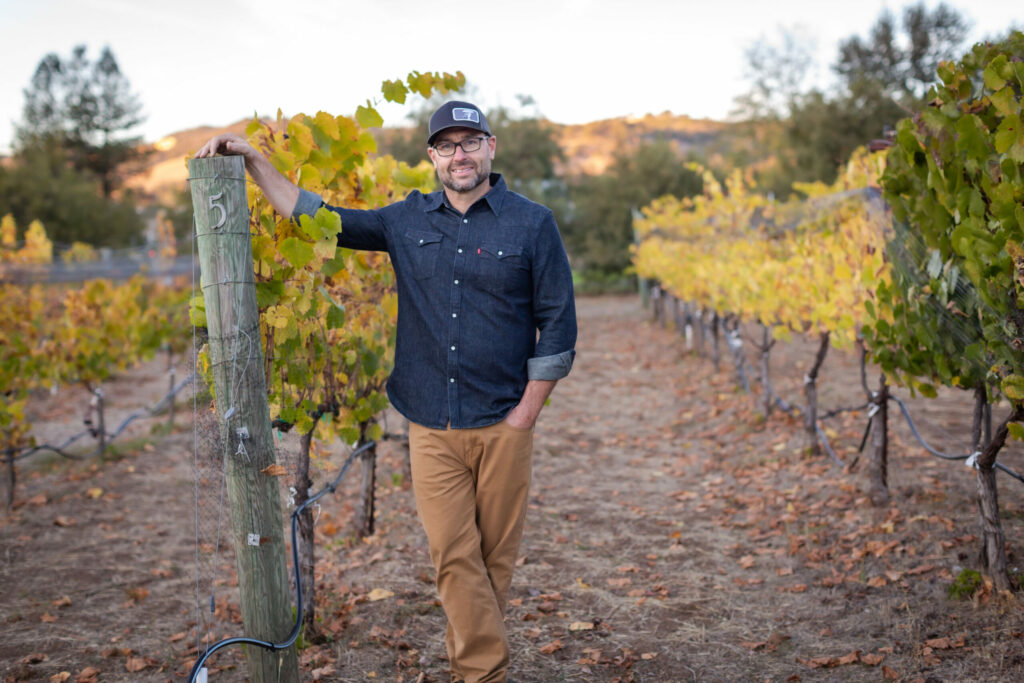
Best known as the founder and winemaker at Kokomo Winery in Dry Creek Valley, Erik Miller launched Breaking Bread as an experimental side project that would allow him to express his artistic side. “The natural category had a lot of intrigue for me, not just in making low-alcohol wines, but making a different style using ancient techniques,” says Miller. His Breaking Bread lineup includes Zinfandel- based pét-nat and rosé, along with a Muscat orange wine and a chillable Mourvèdre-Zinfandel blend called Al Dente. Now, he’s adding Italian varieties to the mix.
Making the Breaking Bread wines has not only taught Miller that native fermentations are the way to go—including for his Kokomo brand—but also that making successful low-intervention wines is not for amateurs. “I tell people that you do not want to mess with making natural wine unless you’re a seasoned winemaker,” he says. “It’s very easy to get burned.”
Most proud of: Our Pét-Nat, because it’s made with old vine Dry Creek Zinfandel and done in an ancient style.
What I’m drinking in 2024: Extradimensional Wine Co. Yeah!’s Marvelous Mourvèdre , because I have always been inspired by Hardy Wallace’s work and how he makes Mourvèdre.
Eiji Daniel Akaboshi
Freeman Winery
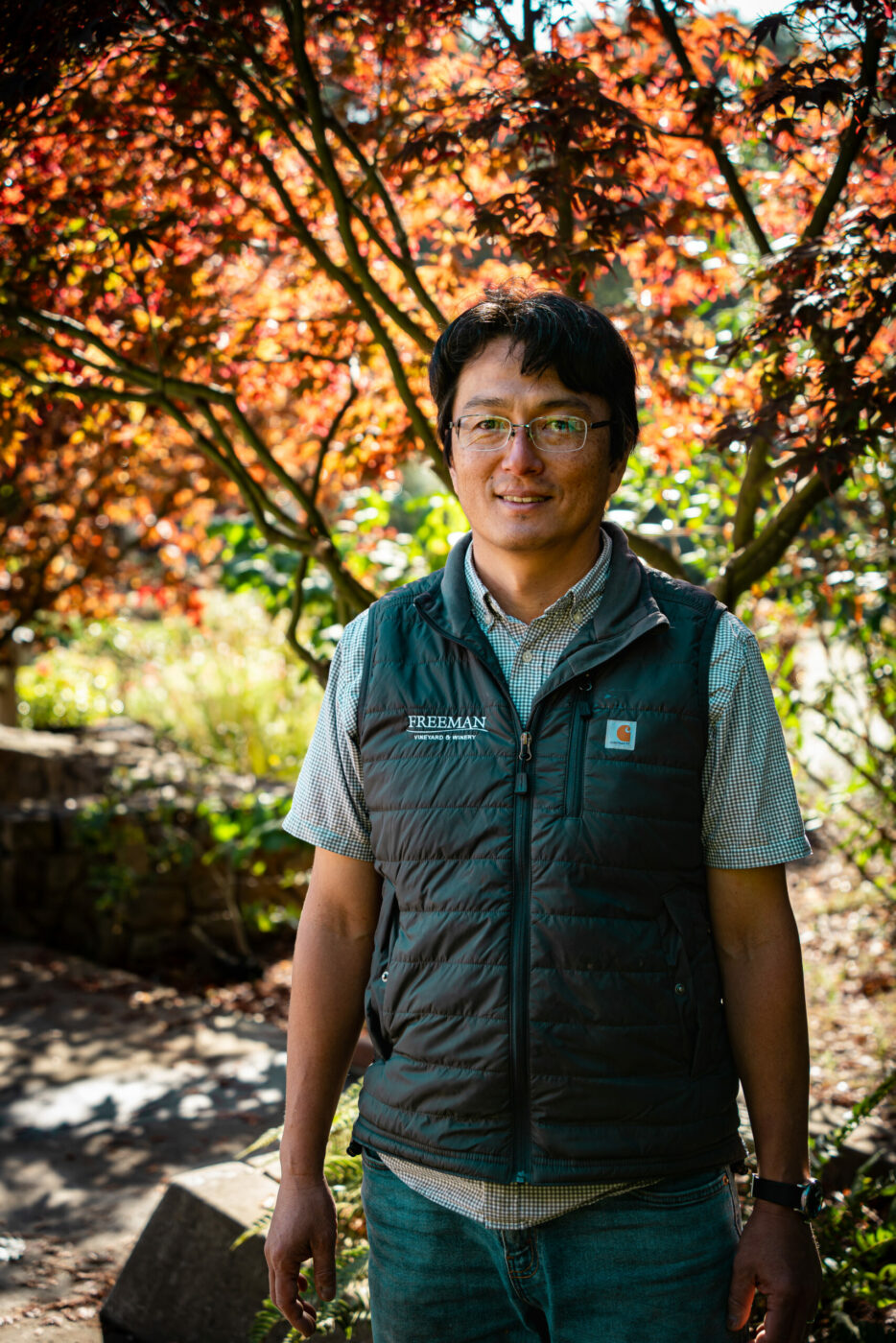
When Eiji Akaboshi set out to become a winemaker, he thought he would be the first in his family to do so. But as he later learned, a Japanese ancestor had beaten him to the punch by more than a century. Pioneering winemaker Kanaye Nagasawa, a distant relative of Akaboshi, ran the Fountain Grove Winery in Santa Rosa at the turn of the 19 th century and was known to the locals as the “Wine King of California.” “There are so many coincidences that you start wondering if things are connected,” says Akaboshi, who joined Freeman Winery in Sebastopol as associate winemaker this past spring.
“Maybe it’s in my DNA or my blood that I had a tendency toward wine that somehow came from my ancestors.”
By another remarkable coincidence, Akaboshi now works alongside another Japanese winemaker, Akiko Freeman, making Russian River and Sonoma Coast Pinot Noir and Chardonnay. Though he once dabbled in launching his own Pinot Noir label, Akaboshi says he’s happy to remain part of an in-house team.
“I have a terrible affliction that when I make something delicious, I just want to give it to people,” he says. “I’m more of a craftsman than a businessperson.”
Most proud of: This was my first harvest at Freeman Winery, and the most exciting wines that I worked with were the Estate Pinot Noirs that came in from our Gloria Estate and Yu-Ki Estate vineyards. Even before the fermentation started in the open top tanks, it already had substance and depth.
More Sonoma standouts: The Tempranillo from our neighbor, Marimar Estate. I tasted it this year before harvest and it was lovely— very balanced with a mineral character and depth. I would like to revisit it in 2024 to see how it is developing. It will definitely keep getting better.
The One with The Palate: Morét Brealynn Chavez
Morét-Brealynn Wines
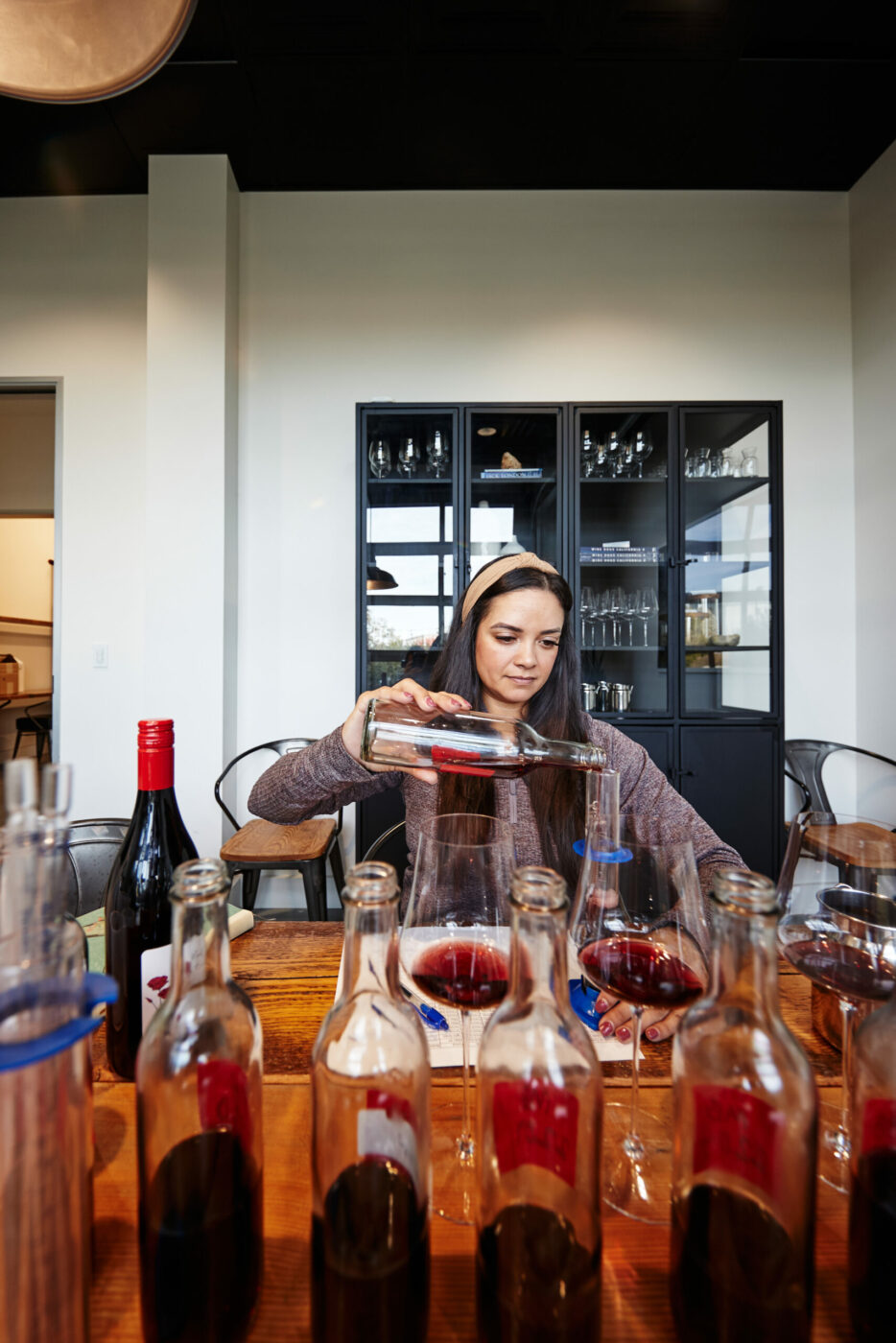
Morét Brealynn Chavez worked in winery hospitality and marketing before her fascination with winemaking lured her into the cellar. Though she’d long taken an interest in production— peppering cellar teams with questions after her workday ended—the early morning schedule of a typical winemaker kept her from making the switch. After meeting winemaker Adam Lee and becoming his general manager, Chavez overcame her aversion to sunrises.
“When it was just Adam and me, I didn’t have the choice to sleep in or let someone else do things,” says Chavez. “As my confidence in my own palate and my passion for being out in the vineyards grew, I just couldn’t not do it.”
She made her first Morét-Brealynn Pinot Noir in 2021 with Lee as consulting winemaker. Now in its third vintage, with a Heintz Vineyard Pinot Noir in the works, the brand specializes in Russian River Pinot Noir, plus Muscadelle under the Stray Cats label, which donates proceeds to local animal shelters.
Chavez says she likes her Pinots on the intense, full-bodied side—a style she achieves through meticulous attention in the vineyard to a Taylor Swift soundtrack.
Most proud of: My 2022 Russian River Pinot. It has a deeper concentration that’s reflective of the vintage and my barrel selections. There’s a silkiness on the palate that comes with darker red fruits, cinnamon, and some chocolate on the finish.
What I’m drinking in 2024: Due to the late harvest, we were able to squeeze in a visit to Dehlinger. The fruit on their estate property tasted so delicious, I wished it was my fruit.
Dream Wine Destination in 2024
“I am going to Greece and am so excited!” — Joel Burt, Las Jaras
“Galicia. My wife Jackie and I are planning to travel there this winter to learn from the Old World producers.” — Gustavo Sotelo, Orixe Sotelo
“The Etna region of Sicily. My grandfather was born in Siracusa and I’ve never been there, so that’s very high on my list.” — Daniel Ricciato, Marnet
“I need to get back to the Roussillon and pick up the rest of my stuff!” — Coral Wang, Maison des Plaisances
“The wine culture of South Africa is so welcoming, and for new wine drinkers their entry level wines are well priced and delicious! The Hemel-en-Aarde and Elgin wine regions are incredible.” — Justin Trabue, Ward Four Wines
The World Traveler: Katrina Laemmerhirt
Social Creatures
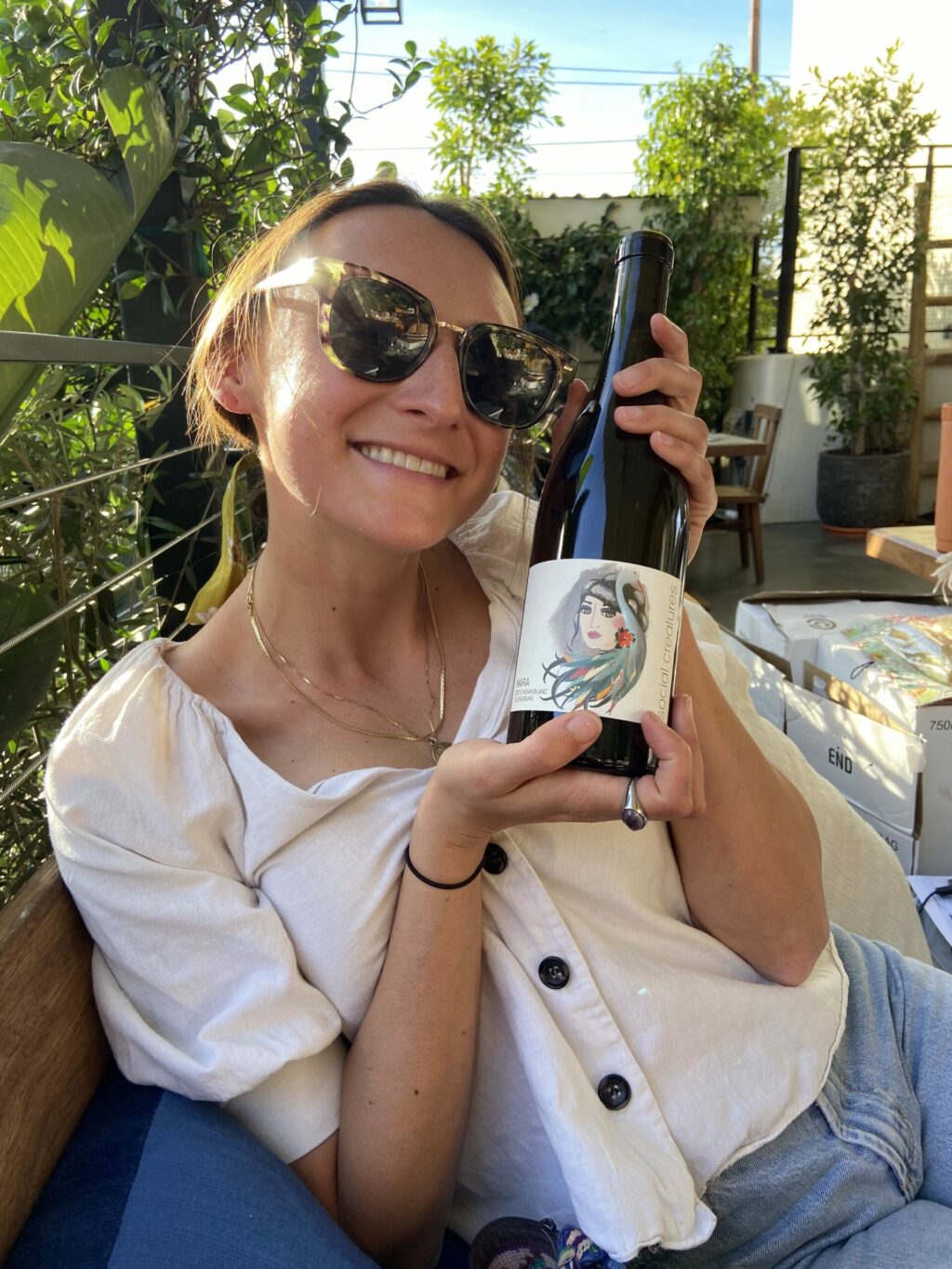
In 2019, Katrina Laemmerhirt quit her job in Chicago and set off on a one-year backpacking trip to weave together her love of travel and wine, beginning in France at harvest, then hiking through Greece, Italy, and Egypt (where she was stranded for three months during lockdown).
Since moving to California in the fall of 2020, she’s arranged her life around her two loves, working in South Africa and Chile while obtaining her formative winemaking education from pioneering natural winemaker William Allen of Two Shepherds. “He was the first one to give me some cellar space and some barrels to start Social Creatures,” she says. “I just became so obsessed, and there’s such a great community here.”
Laemmerhirt now keeps a day job in marketing at Medlock Ames while growing her small label, made at a custom crush in Santa Rosa. ‘Egon,’ a low-intervention Cabernet Franc named for her German grandfather, is already on the wine lists at The Matheson and Little Saint, and she’s released two different Chenin Blancs.
Next up is exploring her interest in viticulture—not surprising for someone who’s been known to pitch a tent and sleep in the vineyard. “I don’t know why everyone doesn’t do that,” she says. “It’s just so beautiful.”
Most proud of: My Hannah Chenin Blanc, named for my cousin Hannah—so bright and bursting with honey and apricot aromatics and the acidity is so refreshing. It’s a really serious wine, and then it can also be fun and fresh.
What I’m drinking in 2024: I am excited to try the hybrid grape wines and co-ferments of my friend Marreya Bailey at Mad Marvlus. She crafts bubbly pét-nats and even sometimes forages her own fruit.
In One Word, Driving a Forklift Is…
“Precision.” – Eglantine Chauffour, ENA Wines
“Essential.” – Erik Miller, Breaking Bread Wines
“Artful.” – Katy Wilson, LaRue Wines
“Inconceivable.” – Morét Brealynn Chavez, Morét-Brealynn
“Gratifying.” – Henry de Lambert, Roth Estate
“Empowering. You feel like such a badass.” – Katrina Laemmerhirt, Social Creatures
Nick Hess
Leghorn Wine Company
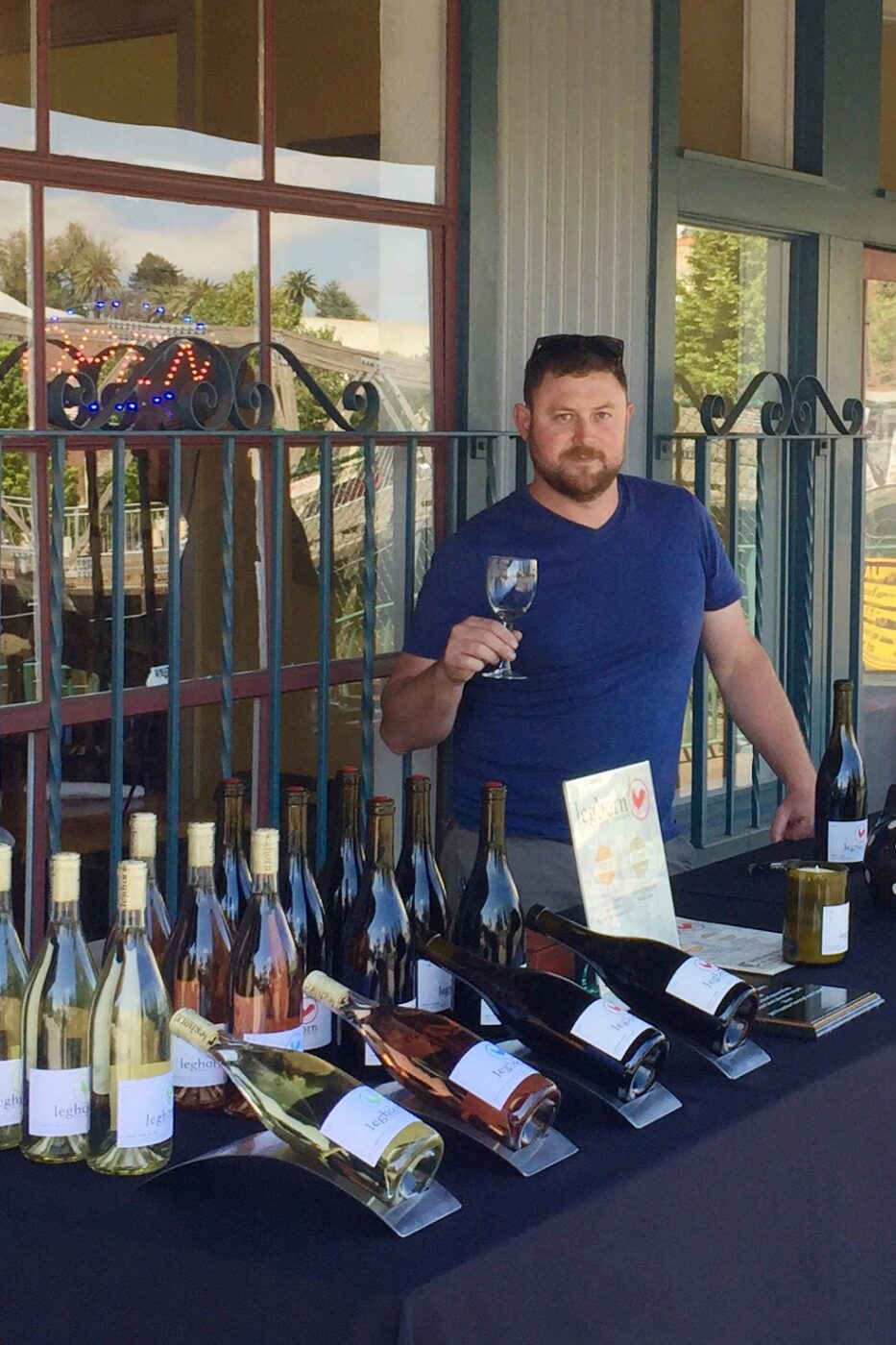
Nick Hess discovered his passion for wine while waiting tables as a college student in Santa Barbara. Once the match was lit, he worked at wineries from the Central Coast to the Southern Hemisphere, and eventually returned to his native Sonoma County to make wine in his own backyard. He launched the Leghorn label in 2015 as a showcase for Petaluma Gap Pinot Noir—years before the region officially became an AVA. While getting his brand off the ground, he also worked for several years as associate winemaker and production manager at Meadowcroft Wines in Sonoma.
Last spring, Hess joined Schramsberg Vineyards in Napa Valley as the winery’s production manager. The move immediately inspired him to start thinking about adding a sparkling wine to the expanded Leghorn portfolio.
“I’m going to try and learn how to do it on a smaller scale, more by hand,” says Hess, who describes his low-impact winemaking style as “natural-adjacent” and inspired by the Slow Food movement. “I already have a few trials going for that.”
Most proud of: My Petaluma Gap Pinot Noir – it’s a challenge to continuously try to raise the bar and showcase our AVA. Also, my Petaluma Gap Sauvignon Blanc gives me a chance to work with a varietal that’s rare to the Gap and distinguish it from the Sauvignon Blanc grown in warmer regions of the county.
What I’m drinking in 2024: I have really been enjoying the wines from Garry Brooks at Brooks Note. Their new winery project in Petaluma is exactly what our local wine community needs more of, and they are the kindest, most genuine people.
Henry de Lambert
Roth Estate
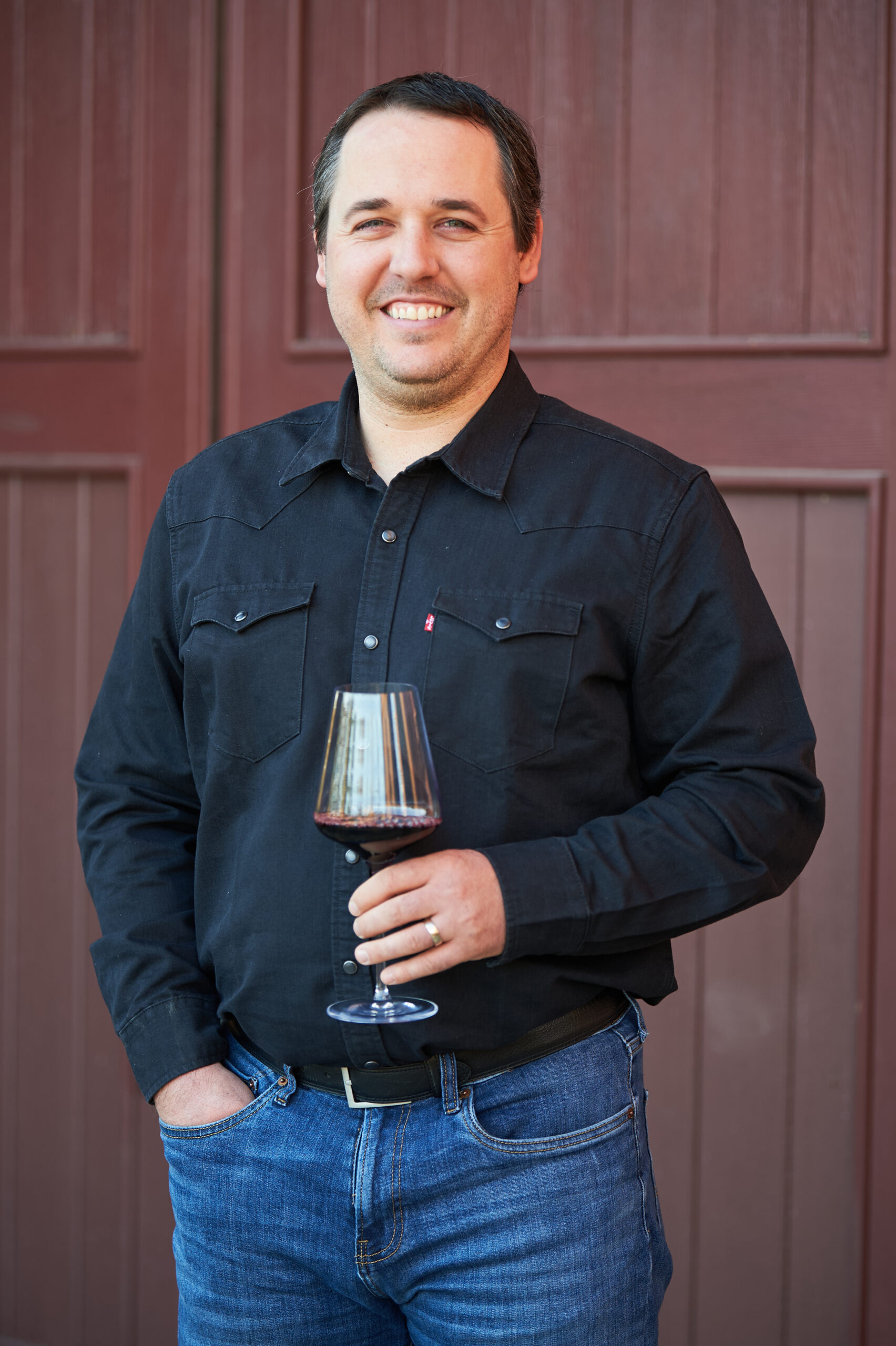
When Henry de Lambert joined Roth Estate as winemaker in 2023, he had some pretty big shoes to fill. The previous year, Roth’s 2019 Heritage Red— made by veteran winemaker Michael Beaulac—took the top prize at the Press Democrat North Coast Wine Challenge.
The Windsor native originally set out to earn a bioengineering degree before a foray into brewing showed de Lambert the wonders of fermentation.
After working in the labs and cellars at Mauritson Wines and Trinchero Family Estates, he became associate winemaker and then director of operations for PreVail, a sub-brand of Ferrari-Carano devoted to Sonoma County Cabernet Sauvignon.
Now, at Roth, he crafts Alexander Valley Cabernet Sauvignon with a minimalist touch. “For me, less is more,” says de Lambert. “My job as a winemaker is to let the fruit do the talking.”
He’s also hoping that the wines will elevate Sonoma County’s reputation as a Cabernet Sauvignon region. “When it comes to Cabernet,” he says, “there is no doubt in my mind that Sonoma County can complete at the highest level.”
Most proud of: My 2022 Heritage Sonoma County Red Blend, a great combination of tradition and creativity. This ready-to-drink Bordeaux blend allows for an artistic twist from a “left brain” winemaker.
What I’m drinking in 2024: Try the Hartford Court Jennifer’s Vineyard Pinot Noir. It’s grown on the same ranch where my great-grandparents Henry and Mary once raised dairy cows and grew potatoes in the 1920s.
Favorite Harvest Meal
“A Cubano sandwich from Jackson’s Bar and Oven.” — Erik Miller, Breaking Bread
“Turkey-sweet potato chili made with black beans and chipotle peppers in adobo.” — Daniel Ricciato, Marnet Wines
“Cheesy pasta of every sort.” — Coral Wang, Maison des Plaisances
“Peanut butter!” — Katrina Laemmerhirt, Social Creatures
“Tortas de carnitas from Healdsburg’s Downtown Bakery.” — Henry de Lambert, Roth Estate
“In-N-Out paired with an ice-cold Modelo.” — Katy Wilson, LaRue
“Who doesn’t love a breakfast burrito?” — Adolfo Hernandez, Monroy Wines







